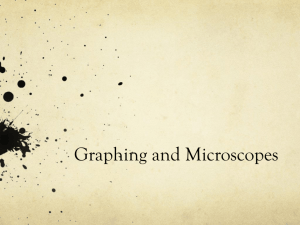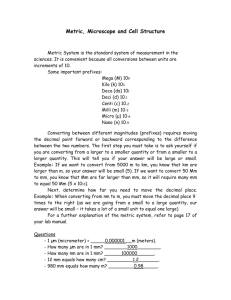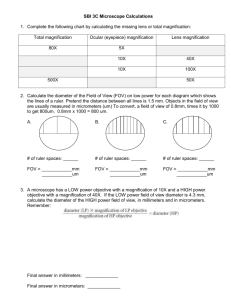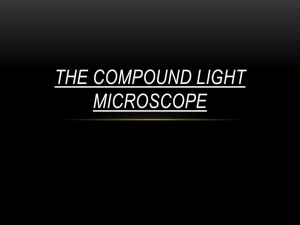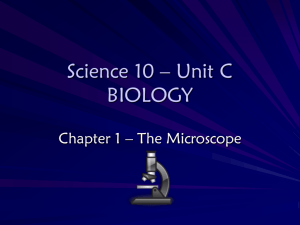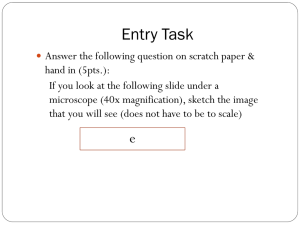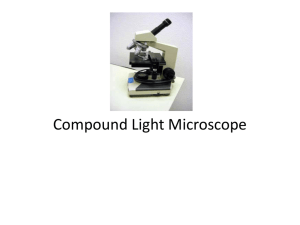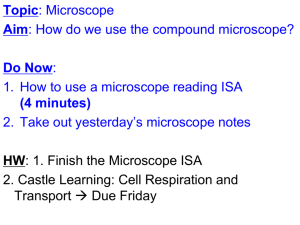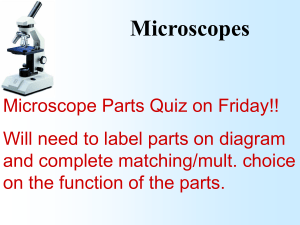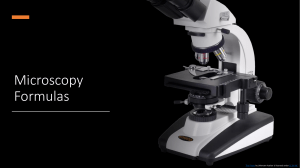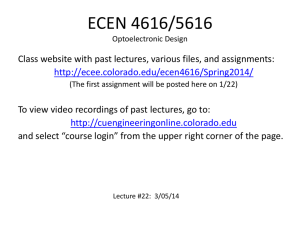Why do we need Scientific Tools & Techniques?
advertisement
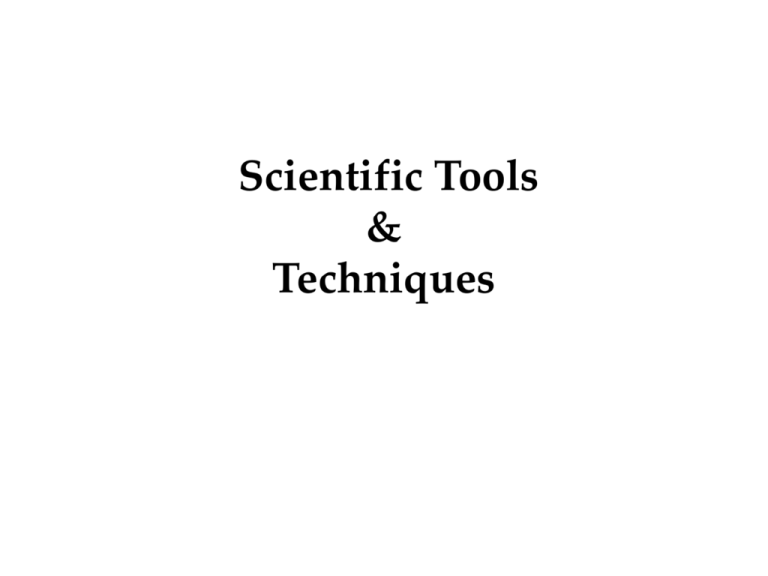
Scientific Tools & Techniques Compound Light Microscope • Uses light • Image appears upside down and backwards • Under Low Power field of view is larger (4 times) • Under High Power field of view is smaller (4 times) How will the f appear in the field of view of a compound microscope? Upside Down and Backwards FOV in Low Power: 4 cells are visible How many cells will be visible in high power? FOV in High Power: 1 cell is visible! Microscope Rules: • Always start with low power – Field of view is large and bright – Helps you find specimen – Use the coarse adjustment knob to focus • Switch to High Power to see detail – Adjust diaphragm (light) for smaller field of view – Field of view is smaller and darker – Helps see fine detail – Only use fine adjustment knob to focus Total Magnification: Eyepiece # X Objective # = Total Magnification # • What is the highest total magnification in this diagram? • Answer: 10 X 40 = 400x Eyepiece 10x 40x 10x What is the total magnification under low power in the diagram? Eyepiece 10x Answer: 40x 10 X 10 = 100x 10x Electron Microscope • A major breakthrough because they can magnify 250,000 x’s • Shows much more detail than compound light microscopes • Shows great detail of inner structures Ex) The inside of mitochondria in a cell! Microdissection tools/instruments • Special micro-tools (very tiny) • Used to take apart cells • Ex) Removing a nucleus from one cell and putting inside another cell! • Used in genetic engineering Use of Staining • Staining allows for cell parts to be seen • The nucleus for example becomes more visible under the microscope when a stain is used • Iodine is often used to stain cells Centrifuge (Ultracentrifuge) • Spins at high speeds to separate substances by density • Heavier particles end up in the bottom of the test tube Chromatography • Separates colors • Chromatography paper is used • Ex) Plant pigments can be separated using chromatography Gel Electrophoresis • Used to separate bands of DNA • DNA bands of different sizes move at different rates – DNA bands move because of the charge • Used in forensic investigation (CSI) • Also used to determine paternity Gel Electrophoresis • How do you know these samples are from different people? • What’s responsible for the movement of DNA? Which two species of bear are most similar? How do you know? Which direction should the slide be moved to center the cell? The diagram below shows the letter h under low power, which diagram shows the high power field of view? 1. 2. 3. 4. How many micrometers in diameter does each cell measure? How many millimeters in diameter does each cell measure? In which direction should the slide be moved to center the cell? Name 2 unsafe practices shown below. Which lab technique was used to separate the substances in the test tube?


